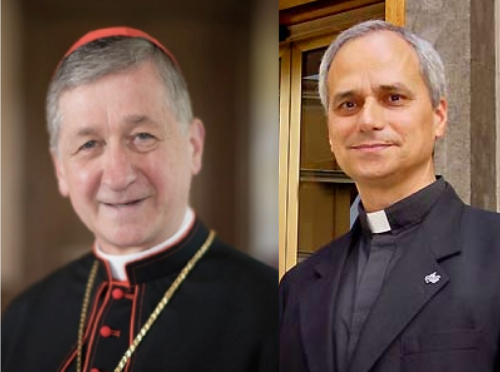The Pillar reported Tuesday morning that Bishop Robert Prevost had, while he was a provincial Augustinian superior in the U.S., permitted a known sexual abuser to reside near a Catholic elementary school without alerting the school or parish to the priest’s presence.
The incident, involving the now-laicized Fr. James Ray, occurred in 2000, before the sexual abuse scandals of last 20 years. Some Church watchers may consider this old news, and rightly note that many hard lessons have been learned by the hierarchy in the intervening years.
But given Prevost’s recent appointment to the Congregation for Bishops in Rome, the incident raises questions about the ability of bishops to apply the rigors of Pope Francis’ zero-tolerance policy in cases of episcopal negligence, in the light of their own administrative records.
In 2019, the pope promulgated Vos estis lux mundi, which set out new mechanisms for holding bishops to account for their handling, or mishandling of clerical abuse cases, including instances of negligence. The law was issued following a global summit in Rome, convened by the pope, in the wake of the Theodore McCarrick scandal.
Since then, we have had the publication of the McCarrick Report, which documented decades of inaction against the disgraced former cardinal, despite concerns about his behavior being raised repeatedly to Church authorities. The report identified a cultural problem of clericalism, and the damaging effect of bishops essentially giving the benefit of the doubt to one of their own when accusations were made.
Also since the promulgation of Vos estis, we have seen investigations into several U.S. bishops announced, with some of them now well into their second year. While local metropolitan archbishops are usually charged with conducting these investigations, it is the Congregation for Bishops in Rome which will make a final determination about how serious any negligence or misconduct actually is.
The law itself is somewhat vague. Vos estis criminalizes “actions or omissions intended to interfere with or avoid civil investigations or canonical investigations, whether administrative or penal” in instances of sexual abuse, and judging the intention can often come down to the extent to which the judges can see themselves behaving in the same way in the same circumstances.
Now, to be clear, this is not to suggest that Prevost’s allowing a priest accused of serial sexual abuse to live near a school without notification is any sort of crime under Vos estis. But it is also worth noting that prior to Vos estis’ publication, the pope issued another law, Come una madre amorevole, in 2016.
In that law, which the Congregation for Bishops is also charged with enforcing, a bishop “can be legitimately removed from this office if he has through negligence committed or through omission facilitated acts that have caused grave harm to others, either to physical persons or to the community as a whole. The harm may be physical, moral, spiritual.”
Can allowing a priest accused of serial sexual abuse of children to live in near a school without warning either the school or parish community cause spiritual and moral harm to the community? Perhaps. Can it be considered negligent? Many would argue it can. The question of how members of the Congregation for Bishops might interpret the facts, and apply the law, in different cases is not moot.
In 2018, Cardinal Blase Cupich, also a member of the congregation, apologized for allowing a different priest accused of sexual abuse to live in the same Chicago house.
When it surfaced in September 2018 that Fr. Richard McGrath was living in such close proximity to a Catholic elementary school, and to a nearby preschool, local Catholics were scandalized and vocally upset. In response, Cupich sent a letter of apology to the St. Thomas the Apostle parish and school communities, and said the priest would move immediately.
Was there harm to the community? The fact of Cardinal Cupich’s apology would seem to accept there was. Was it grave? That, at least in canon law, is a matter of interpretation – an interpretation Cupich and Prevost are charged with making in cases involving their brother bishops.
Thankfully, neither case involving the Chicago house resulted in physical harm to anyone. But even without presuming that the decisions of Prevost or Cupich in these cases rises to the level of “grave” moral or spiritual harm in law, it is reasonable to ask how their own actions might color their interpretation of a similar case involving another bishop. Would either Cupich or Prevost feel able to impose Pope Francis’ policy of zero-tolerance if they could see their own past thinking reflected in the actions of a brother bishop? Would it be too easy to be understanding toward an approach the pope says is intolerable?
Broadly, the Chicago examples point to a question about how effectively bishops can judge each other against new laws that criminalize the kind of decision-making once common among their ranks.
As the McCarrick Report made clear, bishops giving each other the benefit of the doubt has been a problem in the Church for decades. While the rules have definitely changed in recent years, personnel can, and sometimes does, equate to policy; it certainly can weigh heavily on how a policy is implemented.
Building a culture of zero-tolerance and mutual accountability among bishops may need a generational shift, and require a new cohort of bishops who have only ever known, and only ever held themselves to, the new standards.
Join Our Telegram Group : Salvation & Prosperity










